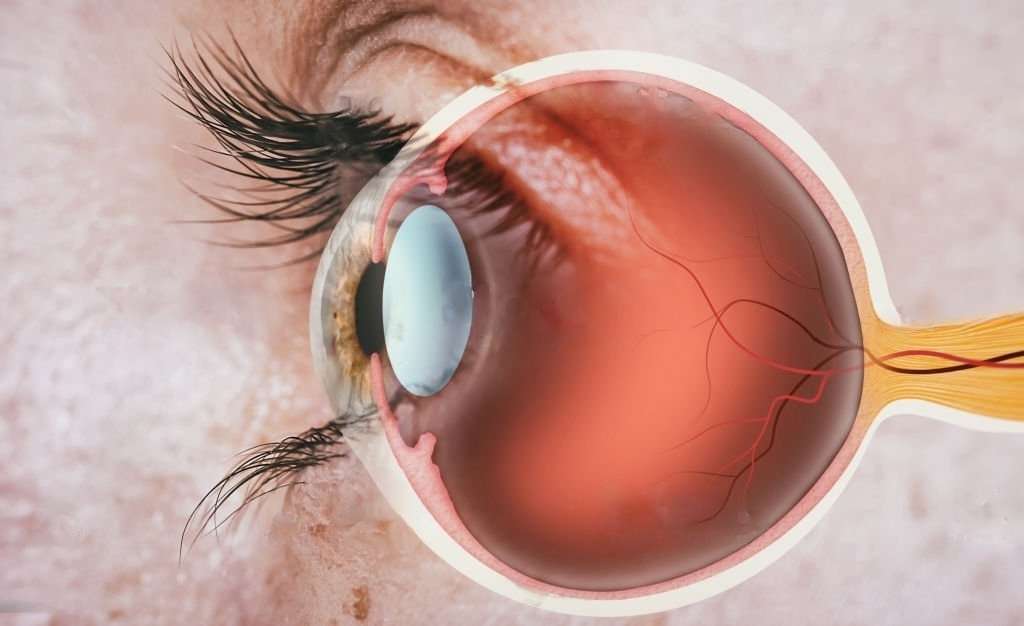The main causes of retinal disease are the following: High myopia or pathological myopia, diabetic retinopathy and retinal vascular diseases, age-related macular degeneration; and other diseases of the macula and retinal detachment. In this blog JL Rohatgi Hospital has told how these diseases can be treated and one can get rid with this problem.
Myopia occurs because the eye grows to a larger size than normal, so that the image we are looking at does not come to focus on the back of the eye, on the retina, but remains in a situation in front of itself, due to the growth of the eyeball and so that we can focus it, we have to use glasses that separate the rays of light, and transfer that image to the plane of the retina.
But we have two types of myopia: A normal myopia, the one we have just mentioned, that does not cause more conflict than the need to wear glasses and we have a pathological myopia, typical of tall myopic patients, which can cause significant problems in the fundus of the eye. and the retina.
High myopia is the first cause of affiliation to the ONCE in our country. There are more than 900,000 high myopes and their prevalence has been increasing in recent years, being the fourth cause of visual disease, after cataracts, glaucoma and diabetic retinopathy.
High-grade or pathological myopia can cause serious eye problems, through three mechanisms:
- The first is because it is an important risk factor for retinal detachment, which we will talk about later. More than 50% of retinal detachments occur in myopic patients: A myopic person of more than three diopters has a risk of retinal detachment 10 times greater than a non-myopic patient.
- Secondly, myopia can cause a disease of the centre of vision, since it can affect the macula, which is what we call the centre of the retina. This disease does not lead to total blindness, as the patient always retains side vision, which helps us to navigate the world, but it takes away precision vision, which allows us to read, sew, recognize faces, etc. producing a disability that results in legal blindness, even if it is a partial loss of vision.
- Third, high myopia is frequently associated with damage to the optic nerve, which is responsible for carrying the image to the brain for interpretation. The optic nerve suffers in the myopic, especially since pathological myopia is usually associated with glaucoma (high eye pressure), which alone is the disease that causes the most blindness in our environment.
Diabetes is one of the most important epidemics of the 21st century. The WHO estimates that there will be 500 million diabetics in the world by 2030. Approximately 25% of people affected by diabetes have some degree of diabetic retinopathy.
Diabetic retinopathy is the most frequent cause of blindness in the active population in industrialized countries. Diabetes affects the eyes because it produces an alteration in all the vessels of the organism (which is why diabetics have more frequent heart attacks, strokes, vascular problems in the limbs or involvement of the kidney vessels).
The vascular involvement of diabetes, where it is usually discovered first, is in the small vessels of the retina, which, altered by the disease, release serum and flood the retina, reducing vision (macular edema) or leaving large areas of the retina without irrigation. retina, causing the dying cells to emit a distress signal (producing growth factors) that attracts newly formed vessels to the area that cause haemorrhages, glaucoma or retinal detachment, leading the patient to blindness (proliferative diabetic retinopathy).
There are other relatively common diseases of the retinal blood vessels that can lead to severe visual loss: Retinal vein obstructions, which occur in 0.50% of the population over 30 years of age and are usually related to arterial hypertension.
Age-related macular degeneration is a degenerative process of the macula (central retina) and, as we have seen in the case of macular involvement due to myopia, it does not lead to total blindness, since patients always retain side or peripheral vision, but it can cause legal blindness by preventing them from reading and doing precision work.
It is the main cause of irreversible visual loss in people over 50 years of age and causes legal blindness in 1.7% of all people above this age. It is not the only cause of macula involvement, but it is one of the most serious and frequent. In the macular area, degenerated by age, abnormal blood vessels appear that trying to regenerate and nourish the area, will cause its destruction if we let them. Then we will see how they can be treated.
Other causes of macular involvement are, for example, the formation of a small tear at the level of the centre of the macula (macular hole) or the growth above it and strongly adhered to it, of a transparent tissue that can sometimes contract, giving rise to a puckering of the central retina and visual diminution (epiretinal membranes). These two diseases also affect the central area of vision.
Hereditary retinal diseases encompass a large and heterogeneous group of retinal diseases, which have in common the fact that they are genetically inherited. The genetic alterations that produce them are varied and affect a very large number of different genes, being able to affect only the centre of vision in some of them and total vision in others.
The most common genetic disease of the retina is retinitis or retinitis pigmentosa, which affects one in 4,000 people in the general population and is slowly progressive. In the fundus of the eye pigment release and atrophy of the retina and optic nerve are seen.
What Symptoms Do They Produce or How Can We Suspect That We Are Dealing With These Diseases?
Retinal detachment, either in myopic patients or in normal people, is caused by the vitreous humour, the transparent gel that fills the cavity inside the eye. This gel is closely adhered to the retina. Generally, it contains small collagen condensations inside, which we are able to see when we look against a white surface or at the sky on a clear day.
We all experience these “floaters,” and these are common. But at some point in our lives, as this gel ages, it is going to collapse and separate from the fundus wall, and at that moment we will notice a sudden change in these “floaters”, which will change and increase significantly, with the vision of lights and lightning, generally. During this separation, a small percentage of patients will experience a retinal pull and tear, resulting in a retinal tear.
If this tear occurs, in a very short time, fluid will leak through that tear, separating the retina from the wall of the eyeball and causing severe visual loss. It is important to go to the ophthalmologist immediately when this symptomatology occurs because if it is treated in time, a laser tear can be welded and prevent retinal detachment.
Diseases of the macula also produce very clear visual symptoms, which should make us seek specialized help: Straight lines (gates, tiles, door edges, etc.) curve or undulate. Sometimes a fixed erased area can be seen in the area close to the centre of our vision or a loss of reading ability. If in one of the two eyes, we notice this symptomatology, we must also go to the ophthalmologist since starting treatment as soon as possible is important.
Retinitis pigmentosa occurs with very low vision at night or in low light conditions (in the dim light of a movie theatre, for example) and with a reduction in the field of lateral vision (absence of peripheral vision).










